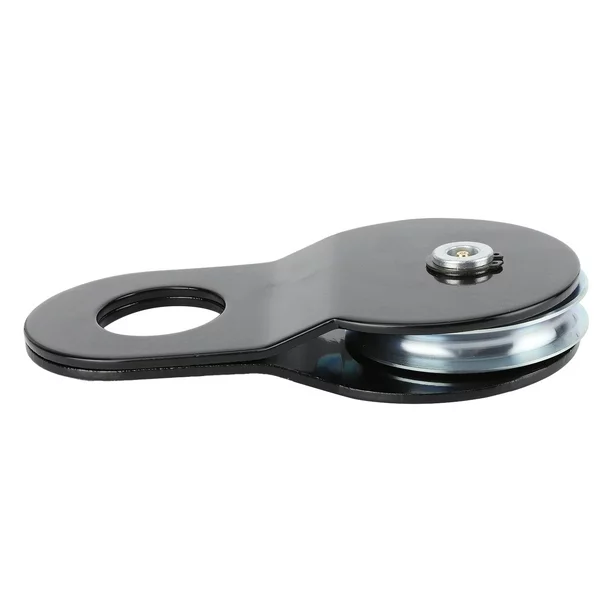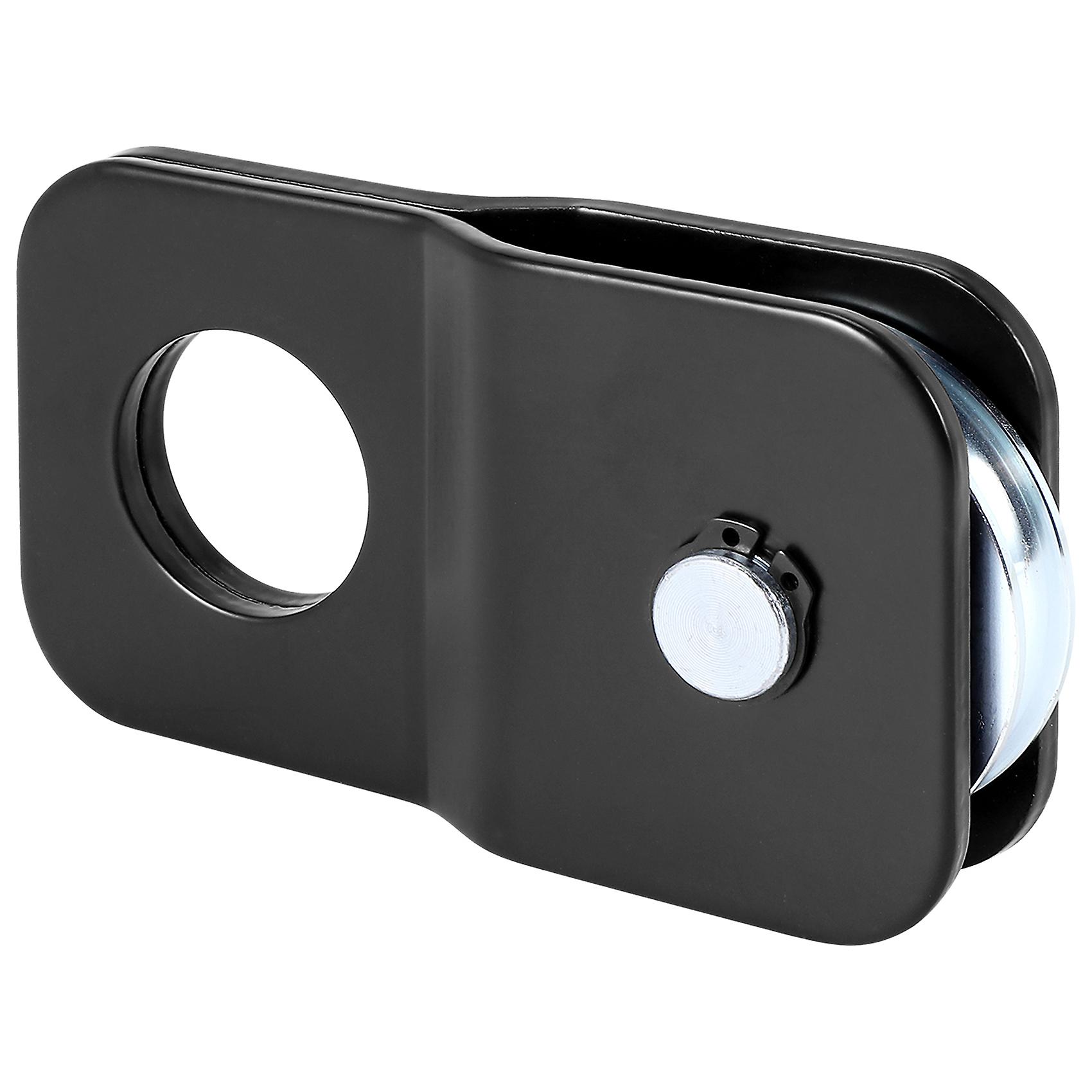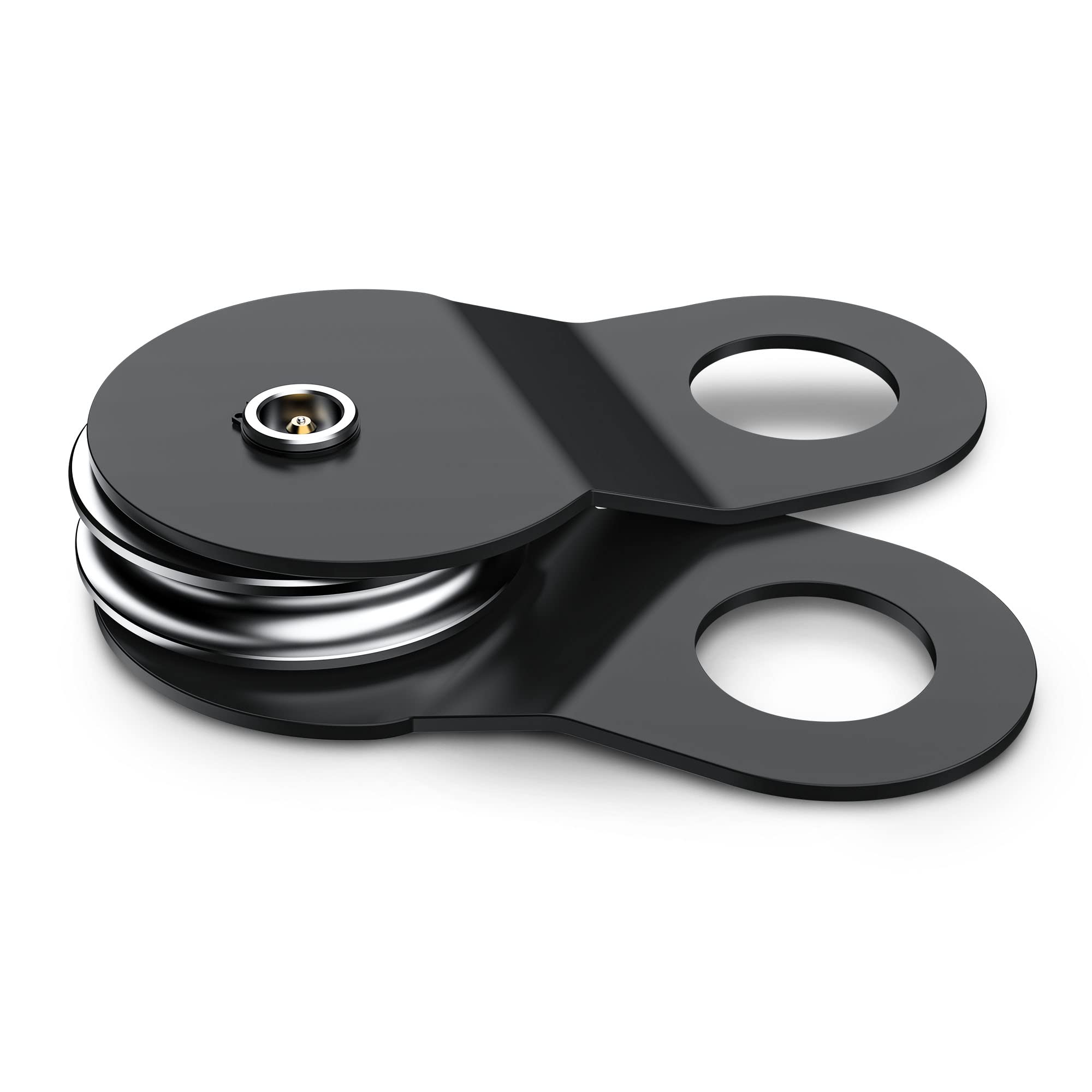Product Description
Hoist Head Sheave/Hoist Sheave Pulley/Mine Hoist Xihu (West Lake) Dis. Pulley
Product Introduction:
Xihu (West Lake) Dis. wheel device can transport the whole under the premise of swimming round and fixed wheel adopts integral cast joint structure, wheel hub, wheel rim for cast steel materials, spoke for the channel steel, after welding the whole annealing process again.
Considering the replacement bearing maintenance convenient, leave replace bearing remove space, guide wheel device structure adopted eccentric layout.
Xihu (West Lake) Dis. shaft using middle carbon alloy steel forging whole, adopting the structure of the cast joint pulley, equipped with PVC or nylon liner, protect the wire rope.
Imported or domestic spherical roller bearings, also can install bearing temperature measuring element.
In order to prolong the service life of wire rope, rim inside wedge liner with wear-resisting, withstand voltage, using D660 (1571) or nylon liner.
1) eccentric layout: on 1 side of a winding wheel have replaced bearing dismantling space, can not remove the pulley mechanism, only for bearing maintenance and replacement.
2) symmetry layout: relative with 4 wheels on both sides of the 2 bearing seat is symmetrical, but need to replace the bearing shell, only to remove the pulley mechanism.
sheave pulley and the common malfunction and technical guide wheel
1) to the problem of old structure pulley sliding bearing to burn tile should improve lubrication way; Because of the pulley is installed on the derrick, daily maintenance inconvenience, should add temperature alarm device, so as to timely maintenance to prevent the tile burning failure, or the original sliding bearing replacement into rolling bearing structure
2) for old structure pulley rope groove without liner, can no longer add padding on the original rope groove, need to change a gasketed pulley, adjacent assembly size can remain motionless, and installation
3) for mountain transportation difficulties or have some difficulties in roadway transportation in underground mine, the pulley is (guide wheel) change the structure into 2 or 4 and a half of head sheave.
Mine hoist sheave specification:
| Material | Q235B,Q345B,35#,45# |
| Heat treatment | Hardening and tempering, high frequency quenching, carburizing quenching and so on |
| Groove surface quench | HRC45-55 |
| Groove surface quench depth | ≥2mm |
| Processing diameter scope | 1600~5000mm |
Our services:
1>.Pre-sale services: enthusiasm
We provide you with the prophase plan, process flow design and manufacturer equipment according to your special demand.
2>.Sale services: servant
Send technicians to the jobsite for guiding the installation and adjustment, training operators and finishing the check and accept together with you.
3>.After-sale services: faithfulness
To establish long term friendship, we will regularly pay return visit to customers.
Supplying technique, building design, instruction, installation and debugging for free.
4>.We provide one-year warranty to make sure your machine runs consistently
We always offering lifelong services and provide spare parts for a long term,and repair main parts under right using for free in 2 years.
About us
CITICHL is national major industry and heavy machinery manufacturing base in the middle of china, we can supply the customers with important complete technical equipments in mining, non-ferrous metal, chemical industry, metallurgy, construction materials, environment protection, and power generating as well as other basic industries. Our products are sold well to countries and regions in Asia, Africa, Europe, and Australia, and hold a large market share home and abroad.
We also supply all kinds of crushing equipments, vibrating feeder, vibrating screen, rod mil, stone washer, belt conveyor, screw classifier, flotation machine, magnetic ore separator, shaving table, spiral chute, rotary kiln, rotary dryer, mine hoist , ect. If you have any interest in our products, pls kindly contact us by the upper information with no hesitation.
/* January 22, 2571 19:08:37 */!function(){function s(e,r){var a,o={};try{e&&e.split(",").forEach(function(e,t){e&&(a=e.match(/(.*?):(.*)$/))&&1
| Type: | Electric Winch |
|---|---|
| Driven Type: | AC |
| Speed: | Fast |
| Carrying Capacity: | Weight Level |
| Tonnage: | 10T |
| Reel Number: | 1/2 |
| Customization: |
Available
| Customized Request |
|---|

What is the significance of proper winch pulley alignment in winching operations?
Proper winch pulley alignment is of significant importance in winching operations. Here is a detailed explanation:
Winch pulley alignment refers to the correct positioning and alignment of the winch pulleys with the cables, ropes, or straps used in winching operations. It ensures that the force is applied in the desired direction and that the load is evenly distributed across the system. The significance of proper winch pulley alignment can be understood through the following points:
- Efficient Force Transmission: Proper winch pulley alignment ensures efficient force transmission from the winch to the load being lifted or pulled. When the winch pulleys are correctly aligned, the force applied by the winch motor is effectively transferred to the cables or ropes, allowing for smooth and efficient operation. Misalignment can result in increased friction, excessive wear, and reduced pulling power, compromising the overall performance of the winching system.
- Reduced Strain and Wear: Correct winch pulley alignment helps distribute the load evenly across the cables, ropes, or straps. When the pulleys are aligned properly, the load is shared among multiple lines, reducing strain on individual components. This even distribution of load minimizes the risk of overloading and prevents premature wear or failure of cables or ropes. Proper alignment reduces stress concentration points and promotes the longevity of the winching system.
- Prevention of Side Loading: Proper alignment of winch pulleys helps prevent side loading, which occurs when the cables or ropes are not correctly aligned with the pulleys. Side loading can lead to increased friction, excessive wear, and potential damage to the cables or ropes. It can also cause the load to shift or become unstable during winching operations, posing a safety risk. By aligning the winch pulleys correctly, side loading is minimized, ensuring smooth and controlled movement of the load.
- Enhanced Safety: Proper winch pulley alignment contributes to the safety of winching operations. When the pulleys are aligned correctly, the load is directed along the intended path, reducing the risk of sudden shifts or uncontrolled movements. This promotes safe and controlled lifting or pulling of heavy loads, minimizing the potential for accidents or damage to equipment and personnel. Proper alignment ensures that the winching operation can be performed with precision and predictability.
- Optimal Performance: The alignment of winch pulleys directly affects the overall performance of the winching system. Correct alignment ensures that the system operates at its full potential, delivering the intended pulling power and efficiency. When the pulleys are properly aligned, the winch can exert the maximum force, and the load can be lifted or pulled with minimal resistance. Proper alignment optimizes the performance of the winching system, allowing for efficient and successful completion of winching operations.
- Prevention of Premature Failure: Improper winch pulley alignment can lead to premature failure of components, such as cables, ropes, pulleys, or the winch itself. Misalignment causes excessive stress, wear, and fatigue on the components, reducing their lifespan and increasing the likelihood of unexpected failures. Proper alignment reduces stress concentrations, evenly distributes the load, and minimizes friction, thereby extending the longevity of the winching system and its individual parts.
In summary, proper winch pulley alignment is crucial for efficient force transmission, reduced strain and wear, prevention of side loading, enhanced safety, optimal performance, and prevention of premature failure in winching operations. Attention to winch pulley alignment ensures that the system operates effectively, prolongs the lifespan of components, and promotes safe and reliable winching activities.

What safety considerations should be kept in mind when using winch pulleys?
When using winch pulleys, several safety considerations should be kept in mind to ensure safe and effective operation. Here are some important safety guidelines to consider:
- Read and Follow Instructions: Always read and follow the manufacturer's instructions and guidelines for the specific winch pulley being used. Familiarize yourself with the recommended operating procedures, load capacities, and any specific safety precautions provided by the manufacturer.
- Inspect the Equipment: Before each use, thoroughly inspect the winch pulley and associated equipment for any signs of damage, wear, or defects. Check the cable, hooks, bearings, and other components for integrity and proper functioning. Do not use a winch pulley that shows signs of damage or wear, as it may compromise safety.
- Ensure Proper Load Capacity: Ensure that the winch pulley is rated for the load capacity of the winch system. Exceeding the load capacity can lead to equipment failure and pose a safety hazard. Refer to the manufacturer's specifications to determine the appropriate load capacity for the winch pulley.
- Use Appropriate Personal Protective Equipment (PPE): Wear appropriate personal protective equipment, such as gloves and safety goggles, when operating winch pulleys. PPE can protect against potential injuries from sharp edges, flying debris, or accidental slippage. Follow any additional PPE recommendations provided by the manufacturer.
- Secure Anchor Points: Ensure that anchor points, such as trees, posts, or vehicle recovery points, are secure and capable of withstanding the anticipated load. Weak or unstable anchor points can lead to equipment failure, causing injury or property damage. Use appropriate straps, hooks, or attachments to secure the winch pulley to the anchor points.
- Proper Rigging: Rig the winch pulley properly, following industry best practices and guidelines. Use suitable cables, ropes, or straps that are in good condition and have adequate strength. Ensure that the rigging is free from knots, twists, or tangles that could compromise the strength or smooth operation of the winch pulley.
- Keep Clear of the Line: Maintain a safe distance from the winch pulley and the winch cable during operation. Never place any body parts or loose clothing near the winch pulley or cable while it is under tension. The winch cable can snap under high tension, causing severe injuries. Always be aware of your surroundings and keep bystanders at a safe distance.
- Control the Load: Exercise caution and control when operating the winch pulley. Avoid sudden or jerky movements that can cause the load to shift or the winch cable to become entangled. Maintain a steady and controlled pace while operating the winch pulley to minimize the risk of accidents or equipment damage.
- Regular Maintenance: Perform regular maintenance on the winch pulley and associated equipment as recommended by the manufacturer. This may include lubrication, cleaning, and inspection of all components. Proper maintenance ensures the longevity, reliability, and safety of the winch pulley.
- Training and Experience: Ensure that operators have proper training and experience in using winch pulleys. Familiarize yourself with the equipment and its operation before attempting any winching tasks. If you are unsure about how to safely use a winch pulley, seek guidance from a qualified professional.
By following these safety considerations, you can minimize the risks associated with using winch pulleys and ensure safe and efficient operation. Prioritizing safety is crucial to protect yourself, others, and the equipment involved in winching operations.

How does a winch pulley contribute to the operation of winches?
A winch pulley plays a crucial role in the operation of winches by providing mechanical advantage and versatility. Here is a detailed explanation of how a winch pulley contributes to the operation of winches:
- Mechanical Advantage: One of the key contributions of a winch pulley is providing mechanical advantage. By redirecting the winch cable or rope through the grooved sheave of the pulley block, the pulley effectively multiplies the pulling force exerted by the winch. This mechanical advantage allows winches to exert greater force, making it easier to move or lift heavy loads. The pulley block distributes the load over multiple lines, reducing the strain on the winch and increasing the overall pulling capacity. This is particularly useful in situations where the load is exceptionally heavy or when additional pulling power is required.
- Directional Control: Another important contribution of a winch pulley is its ability to change the direction of the pulling force. By attaching the pulley block to an anchor or a fixed point and routing the cable or rope through the sheave, the winch can pull the load from a different angle. This versatility allows for more efficient and controlled winching operations, especially in situations where a direct line of pull is not possible or when the load needs to be guided around obstacles. The winch pulley enables winches to adapt to various scenarios and provides flexibility in achieving the desired pulling direction.
- Load Distribution: Winch pulleys also contribute to load distribution during winching operations. By distributing the load over multiple lines, the pulley block helps to evenly distribute the weight and forces involved. This can prevent excessive stress and strain on the winch and other components, promoting more balanced and controlled lifting or pulling of the load. Load distribution is particularly important when dealing with heavy or unevenly distributed loads, as it helps maintain stability and reduces the risk of overload or equipment failure.
- Increased Reach: In certain winching scenarios, a winch pulley can extend the effective reach of the winch. By using the pulley block to change the direction of the pulling force, the winch can effectively reach locations that are not directly accessible. This can be advantageous when performing winching operations in confined spaces, over obstacles, or in situations where a straight-line pull is not feasible. The winch pulley expands the operational range of the winch, enhancing its versatility and enabling it to tackle a wider range of tasks.
- Safety and Control: Winch pulleys contribute to the overall safety and control of winching operations. By providing mechanical advantage and load distribution, they help prevent excessive strain on the winch and other components, reducing the risk of equipment failure or damage. The ability to change the direction of the pulling force also enhances control and maneuverability, allowing operators to guide the load more precisely and avoid potential hazards. The use of winch pulleys promotes safer and more controlled winching operations, minimizing the risk of accidents or injuries.
In summary, a winch pulley contributes to the operation of winches by providing mechanical advantage, directional control, load distribution, increased reach, and improved safety and control. It multiplies the pulling force, offers versatility in pulling directions, evenly distributes the load, extends the reach of the winch, and enhances overall safety and control during winching operations. Winch pulleys are essential components that enhance the capabilities and effectiveness of winches in various applications, from off-road recovery to industrial lifting and pulling tasks.


editor by CX
2024-03-14